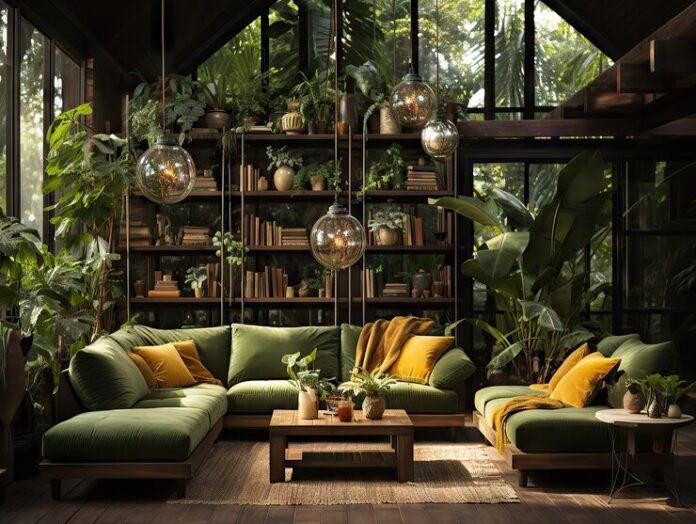In the heart of bustling cities and amidst the concrete jungles, a quiet revolution is taking place, one that brings the soothing touch of nature back into our lives. It’s called biophilic design, and for many, it’s not just a trend—it’s a lifeline to sanity in an increasingly hectic world.
Meet Sarah, a busy professional navigating the challenges of urban living. Her days are filled with meetings, deadlines, and the relentless buzz of the city. But stepping into her apartment feels like a breath of fresh air—literally. Lush green plants cascade from shelves, while a miniature oasis of ferns and mosses thrives in a terrarium. For Sarah, surrounded by nature’s beauty, home becomes a sanctuary, a place to unwind and recharge.
“I used to feel drained after a long day at work,” Sarah shares. “But ever since I incorporated biophilic elements into my home, I’ve noticed a remarkable difference in my mood and energy levels. It’s like having a piece of nature right here with me, grounding me and reminding me to slow down.”
And Sarah is not alone. Across town, in a bustling office building, Mark finds solace in his workspace, thanks to biophilic design principles at play. A living wall adorned with vibrant foliage greets visitors in the lobby, while large windows flood the open office with natural light. Surrounded by the sights and sounds of nature, Mark feels more focused, productive, and at ease, even during the busiest of workdays.
“I used to dread coming into the office,” Mark confesses. “But now, it feels like I’m stepping into a tranquil retreat. The greenery, the sunlight—it’s like a breath of fresh air amidst the chaos of the city. I find myself looking forward to coming to work, knowing that I’ll be greeted by this oasis of calm.”
For designers like Mia, incorporating biophilic elements into interior spaces is not just about aesthetics—it’s about enhancing the human experience. “We’re not just creating buildings; we’re creating environments where people can thrive,” she explains. “Biophilic design allows us to reconnect with our innate connection to nature, promoting well-being, creativity, and productivity in the process.”
As more people seek refuge from the stresses of modern life, the demand for biophilic design continues to grow. From residential homes to corporate offices and public spaces, the integration of nature into the built environment is transforming lives, one leaf at a time. In a world that often feels disconnected from the natural world, biophilic design offers a pathway back to our roots, reminding us of the profound impact that nature has on our health, happiness, and overall quality of life.




